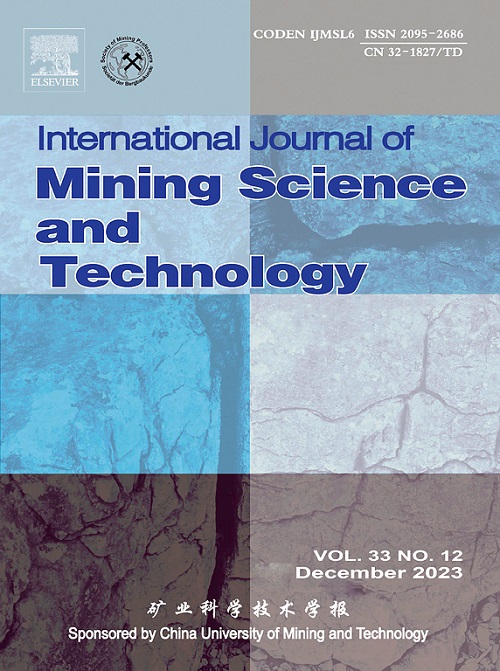深层储层压裂引起的断层再激活和地震风险:机制、预测和观点
IF 13.7
1区 工程技术
Q1 MINING & MINERAL PROCESSING
International Journal of Mining Science and Technology
Pub Date : 2025-08-01
DOI:10.1016/j.ijmst.2025.06.005
引用次数: 0
摘要
随着压裂技术在更深、更复杂地层中的发展,断层再活化和诱发地震活动越来越受到人们的关注。这些事件的发生频率和强度都在不断增加,这凸显了对控制物理机制的深入了解的必要性。孔隙压力升高、断层加载条件改变和地震滑动被广泛认为是主要驱动因素。最近的研究探索了不同因素下的这些机制,包括流体性质、岩石延性、孔隙弹性响应和不断变化的断层应力状态,从而为模型的改进提供了重要的见解。概率预测方法将历史数据的统计分析与实时监测相结合,越来越多地应用于地震风险评估。同时,机器学习技术用于处理大型地震数据集并识别关键模式。然而,它们的预测能力仍然受到地质非均质性、地下复杂性和观测数据匮乏的限制。此外,流体-岩石相互作用使普遍适用模型的发展进一步复杂化,从而限制了减缓策略的普遍性。本文综述了目前对诱发地震活动机制的认识,评价了目前流行的预测和缓解方法,并指出了主要挑战和未来的研究方向。这些领域的进步对于加强地震风险管理和确保地下深层能源的安全、可持续发展至关重要。本文章由计算机程序翻译,如有差异,请以英文原文为准。
Fault reactivation and seismic risks induced by deep reservoir fracturing: Mechanisms, prediction and perspectives
With the advancement of fracturing technologies in deeper and more geologically complex formations, fault reactivation and induced seismicity have attracted increasing attention. The increasing frequency and magnitude of these events underscore the need for a robust understanding of the governing physical mechanisms. Elevated pore pressure, modified fault-loading conditions, and aseismic slip are widely acknowledged as the primary drivers. Recent studies have explored these mechanisms under varying factors, including fluid properties, rock ductility, poroelastic responses, and evolving fault stress states, thereby offering critical insights into model refinement. Probabilistic forecasting approaches, which combine statistical analyses of historical data with real-time monitoring, are being increasingly adopted in seismic risk assessments. In parallel, machine learning techniques are employed to process large seismic datasets and identify key patterns. However, their predictive capabilities remain limited by geological heterogeneity, subsurface complexity, and scarce observational data. Moreover, fluid–rock interactions further complicate the development of universally applicable models, thereby constraining the generalizability of mitigation strategies. This review synthesizes the current understanding of induced seismicity mechanisms, evaluates the prevailing prediction and mitigation methods, and identifies major challenges and future research directions. Advancements in these areas are essential to enhancing seismic risk management and ensuring the safe, sustainable development of deep-subsurface energy resources.
求助全文
通过发布文献求助,成功后即可免费获取论文全文。
去求助
来源期刊

International Journal of Mining Science and Technology
Earth and Planetary Sciences-Geotechnical Engineering and Engineering Geology
CiteScore
19.10
自引率
11.90%
发文量
2541
审稿时长
44 days
期刊介绍:
The International Journal of Mining Science and Technology, founded in 1990 as the Journal of China University of Mining and Technology, is a monthly English-language journal. It publishes original research papers and high-quality reviews that explore the latest advancements in theories, methodologies, and applications within the realm of mining sciences and technologies. The journal serves as an international exchange forum for readers and authors worldwide involved in mining sciences and technologies. All papers undergo a peer-review process and meticulous editing by specialists and authorities, with the entire submission-to-publication process conducted electronically.
 求助内容:
求助内容: 应助结果提醒方式:
应助结果提醒方式:


